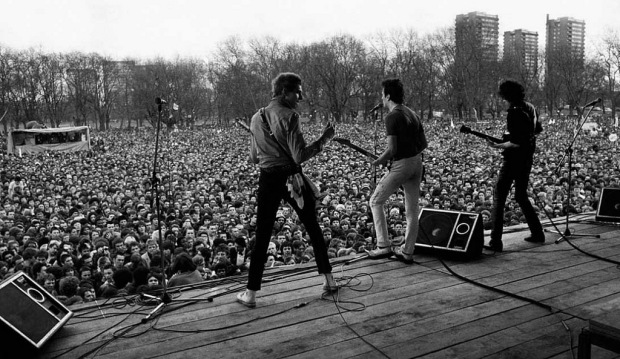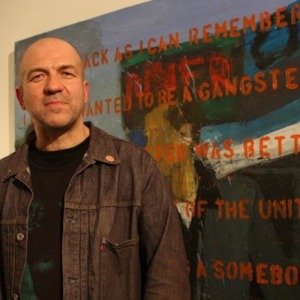Rock festivals, especially those in the golden era of the late 60s and early 70s, are the source for some of the best filmed footage in pop music history. The primary reason for this is pretty obvious. The parade of musical talent for 1967’s Monterey Pop, 1969’s Woodstock and 1970’s Isle of Wight festivals is awe-inspiring, especially in retrospect: high-water marks of a genius era. But they are also great sociological snapshots of their time period and often the audience members are just as entertaining as the performers!
Below are five excerpts from my book Rock Docs: A Fifty-Year Cinematic Journey about this important rockumentary sub-genre, with accompanying vdeo clips. For more info about purchasing information this book, please leave a comment below. Thanks, Rick Ouellette
From the review of Monterey Pop (released 1968, directed by D.A. Pennebaker)
There’s hardly a baby-boomer to be found who doesn’t know something of the quartet of near-mythic Monterey Moments: the Who’s pre-punk working class anthem “My Generation” ending in a cacophony of smashed equipment, Janis Joplin’s no-holds-barred belting on the bluesy “Ball and Chain,” soul singer Otis Redding’s electrifying set winning over the “love crowd” in a career peak just six months before dying in a plane crash, and, of course, Jimi Hendrix’s epic eroticisation of the hitherto harmless ditty “Wild Thing.” The Seattle native had gone to England to make his name, and here reintroduced himself to America with a stunning display of six-string mastery that culminated with the famous fiery sacrifice of his instrument.
**********************************
From Woodstock (released 1970, directed by Michael Wadleigh)
The logistical and crowd scenes that pop up after every three or four songs are every bit as interesting, especially the bravura ten-minute sequence depicting the famous Sunday thunderstorm. It drenched a crowd that had just been galvanized by Cocker’s dramatic recasting of the Beatles’ “With a Little Help from My Friends,” and thrust the stage crew into the role of reassuring the sea of humanity while simultaneously fretting over the fate of their vulnerable light towers and staving off the possibility of electrocution. When the crowd comes out the other end of this mud-covered crucible with their good spirits intact, their reputation is made.
***********************************
From Message to Love: The isle of Wight Festival (released 1997, directed by Murray Lerner)
With six hundred thousand rock fans ferrying over from mainland England in August 1970, the third annual Isle of Wight Festival was one of the biggest concert events in history. Unfortunately, the five-day festival turned out to be a financial failure, and the commissioned footage from director Murray Lerner’s crew did not emerge as a feature film until a quarter of a century later. Nevertheless, Message to Love is a documentary that deserves to sit up on the same mantle as Monterey Pop and Gimme Shelter. It contains a wealth of great musical moments; especially notable are clips of both Jimi Hendrix and the Doors’ Jim Morrison shortly before their deaths as well as footage of the Who at the very apex of their career. It is also a clear-eyed view of an event that was supposed to be an English Woodstock but instead descended into utter chaos as the Aquarian hippie ideal knocked heads with the emerging notion that rock music was ripe for mass-market exploitation.
***********************************
From Wattstax (released 1973, directed by Mel Stuart)
Every music festival film has at least one classic show-stealer and in Wattstax that moment arrives when Rufus Thomas, the perennial Memphis favorite duly advertised as “The Prince of Dance” on the L.A. Coliseum scoreboard, takes the stage. Appearing for all the world to see in a hot pink suit with short pants and white go-go boots, he works up the crowd to such a degree with “The Breakdown” that when he then instructs them to “Do the Funky Chicken,” thousands of dancers storm the football field to oblige him.
***********************************
From Glastonbury (released 2006, directed by Julien Temple)
The Glastonbury Festival in rural England holds a rather unique place in the annals of rock as being the one outdoor event started in the Woodstock era that has continued—despite a few missed years—straight into the present day, adapting and growing exponentially but still retaining much of its counterculture spirit. Rockumentary master Julien Temple has funneled this considerable history into a vibrant, if occasionally jumbled, film record of just under two and a half hours. He benefits from the availability of vintage early footage (some of it from 1971’s Glastonbury Fayre) and adds in his accounting of the modern festival (Temple shot there from 2002-05) with much attention to the event’s evolving sociology and an extensive sampling of live performances clips. What is just as memorable as this multi-generational musical cornucopia is the thirty-ring post-hippie circus that accompanies it: a freewheeling pagan arts fair and anti-establishment concave that equals or even overshadows what’s on the main stage.






